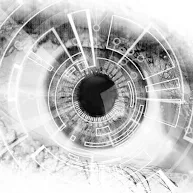If you're worried about privacy, it might be time to cover up your front door's peephole.
Being able to see inside a closed room was a skill once reserved for super heroes. But researchers at the Stanford Computational Imaging Lab have expanded on a technique called non-line-of-sight imaging so that just a single point of laser light entering a room can be used to see what physical objects might be inside...
It’s an incredibly clever technique, and one day it could be a very useful technology for devices like autonomous cars that would potentially be able to spot potential hazards hidden around corners long before they’re visible to passengers in a vehicle, improving safety and obstacle avoidance...
The research could one day provide a way for police or the military to assess the risks of entering a room before actually breaking down the door and storming their way inside, using nothing but a small crack in the wall or a gap around a window or doorway. more























